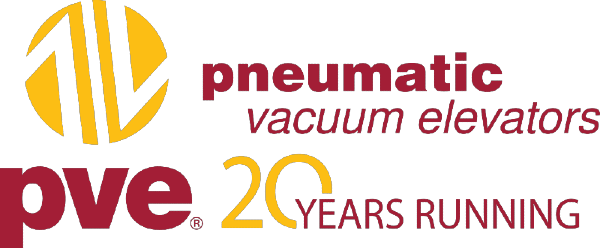Welcome to the technical realm of residential lifts, where we delve into the intricacies of these vertical transportation systems designed for private residences.
Understanding Residential Lifts
Residential lifts, also referred to as home lifts or domestic lifts, encompass a range of elevator systems tailored for installation within homes. These lifts are engineered to provide safe, efficient, and convenient vertical transportation while seamlessly integrating into the architectural and interior design of the residence.
Types of Residential Lifts
Residential lifts come in various types, each offering unique features and advantages. Below is a comparison table outlining some common types of residential lifts:
| Lift Type | Mechanism | Space Requirements | Features |
|---|---|---|---|
| Hydraulic Lifts | Hydraulic System | Moderate | Smooth Ride, Quiet Operation, Energy-Efficient |
| Pneumatic Vacuum | Vacuum Technology | Minimal | Panoramic Views, Space-Saving Design |
| Shaftless Lifts | Gearless Traction | Compact | Minimal Pit and Headroom Requirements |
| Traction Elevators | Traction System | Standard | Variable Speed, Customizable Design |
Key Components of Residential Lifts
Residential lifts consist of several key components that work in tandem to ensure safe and reliable operation. These components include:
- Drive System: The mechanism responsible for moving the lift car between floors. Common drive systems include hydraulic, traction, and vacuum-based systems.
- Control Panel: Interface for passengers to select floors and operate the lift. It also houses safety features such as emergency stop buttons and alarms.
- Safety Devices: Various safety devices, including overspeed governors, door interlocks, and emergency brakes, are installed to prevent accidents and ensure passenger safety.
- Carriage: The enclosed platform or cabin in which passengers and goods are transported between floors.
- Doors and Gates: Entry points to the lift car, have sensors and interlocks to prevent access when the lift is in motion.
Installation Process and Maintenance
The installation of a residential lift involves several stages, including site assessment, structural modifications, lift assembly, and testing. Professional installation by certified technicians is essential to ensure compliance with safety standards and optimal performance.
Maintenance of residential lifts is crucial to prolong their lifespan and prevent malfunctions. Regular servicing, conducted by qualified technicians, includes inspection of mechanical components, lubrication of moving parts, and testing of safety features.
Real-Life Applications
Residential lifts find applications in various scenarios, including:
- Aging in Place: Providing elderly individuals with mobility and independence to navigate multiple floors within their homes.
- Accessibility: Ensuring barrier-free access for individuals with disabilities or limited mobility.
- Luxury Living: Enhancing the luxury and convenience of high-end residences with bespoke lift installations.
Safety Considerations
Safety is paramount when it comes to residential lifts. Incorporating advanced safety features and adhering to regulatory standards ensures the well-being of passengers and minimizes the risk of accidents. Some safety considerations include:
- Emergency Stop Systems: Instantly halts lift operation in case of emergencies or malfunctions.
- Overload Protection: Prevents the lift from operating when exceeding its maximum weight capacity.
- Fire Safety Features: Fire-rated materials, smoke detectors, and automatic recall systems are essential to ensure passenger safety during fire emergencies.
- Regular Inspections: Scheduled inspections and maintenance checks by qualified professionals help identify potential safety hazards. It ensures compliance with safety regulations.
Energy Efficiency
With an increasing emphasis on sustainability and energy efficiency, residential lifts are designed to minimize energy consumption without compromising performance. Key energy-efficient features include:
- LED Lighting: Energy-efficient LED lighting systems reduce power consumption while providing adequate illumination inside the lift car.
- Regenerative Drive Systems: Regenerative drives capture energy during descent and feed it back into the building’s electrical grid, reducing overall energy consumption.
- Standby Mode: Lifts equipped with standby mode automatically power down when not in use, conserving energy during periods of inactivity.
Customization Options
Residential lifts offer a high degree of customization to meet the unique needs and preferences of homeowners. From cabin design and finishes to control panel interfaces and door configurations, customization options abound. Some popular customization options include:
- Cabin Finishes: Choose from a wide range of finishes, including wood, stainless steel, glass, and customized cabin interiors to complement your home’s aesthetic.
- Control Systems: Opt for intuitive control panel interfaces with touchscreen displays, voice activation, or smartphone integration for added convenience.
- Door Configurations: Select from various door configurations, including single-entry, double-entry, or side-opening doors, depending on space constraints and design preferences.
Future Trends
The future of residential lifts is poised for innovation and advancement, driven by technological breakthroughs and evolving consumer demands. Some emerging trends shaping the future of residential lifts include:
- Smart Home Integration: Integration with smart home systems enables seamless control and monitoring of lift operations remotely via smartphones or voice assistants.
- Space-Saving Solutions: Continued emphasis on space-saving designs, such as shaftless lifts and compact footprints, to accommodate smaller living spaces and architectural constraints.
- Enhanced Safety Features: Integration of advanced safety technologies, such as biometric authentication, predictive maintenance, and real-time monitoring, to enhance passenger safety and lift performance.
Conclusion
As residential living evolves to meet the changing needs and lifestyles of homeowners, residential lifts remain a pivotal element in enhancing accessibility, convenience, and luxury within homes. By understanding the technical aspects, safety considerations, and customization options available, homeowners can make informed decisions when selecting and installing residential lifts. With ongoing innovation and technological advancements, the future of residential lifts holds promise for even greater integration, efficiency, and convenience, making them an indispensable feature of modern living spaces.








